
Ankylosing spondylitis overview
Ankylosing spondylitis is an inflammatory condition affecting the spine. Because the inflammatory process, the vertebral bone may fuse together. This makes bending of the back a painful process. In its advanced stage, ankylosing spondylitis can lead to deformity of the backbone. The patient may develop a hunched forward posture, termed as kyphosis in medical parlance. In its severe form, a patient who has developed kyphosis may find it very difficult to lift his head and look in front. The disease is far more common in men as compared to women and usually begins in adulthood. The inflammation may also affect other body parts like the eyes and the gut.
- Important notification about information and brand names used in this slideshow!
- Photo by shutterstock.com
- www.mayoclinic.com/health/ankylosing-spondylitis/DS00483
- http://en.wikipedia.org/wiki/Ankylosing_spondylitis
- http://www.spondylitis.org/about/as.aspx
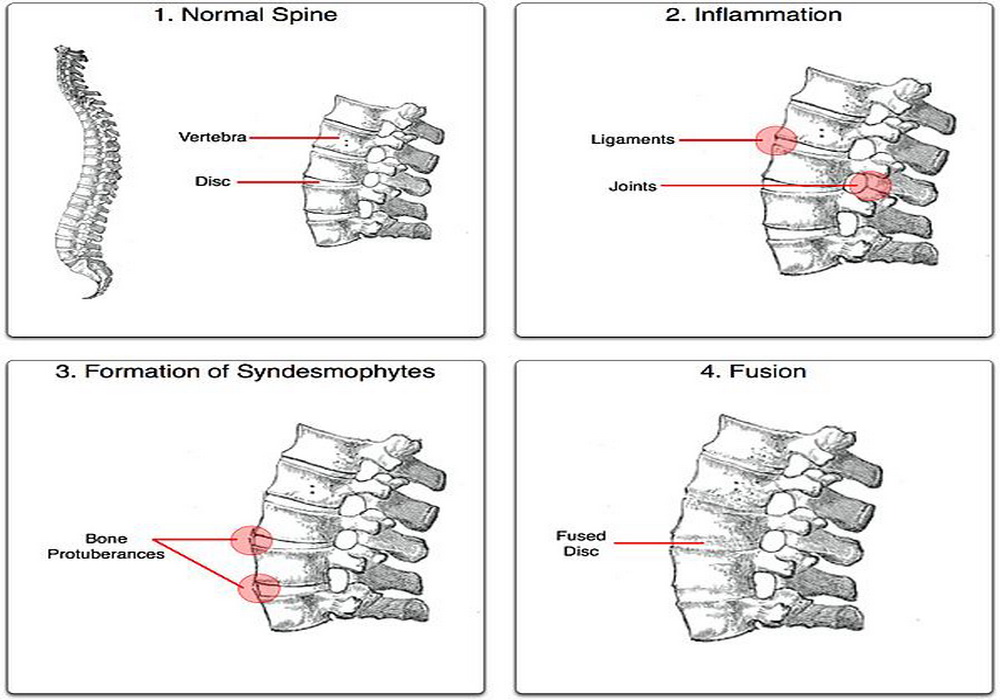
Ankylosing process
The Greek word ankylos means stiffening while spondylos means vertebra. In a patient suffering from ankylosing spondylitis, the part of the backbone that attaches to the tendons and the joints between the vertebrae become inflamed. The body tries to overcome this inflammatory process by producing new bone. The growth of this new bone between the vertebral joints leads to reduced flexibility of the joints. Soon, the joint space is completely filled up by the new bone leading to fusion of two different vertebrae. Ankylosing spondylitis usually affects the vertebrae but may involve any other joint of the body like the hip, shoulder or the knee joints.
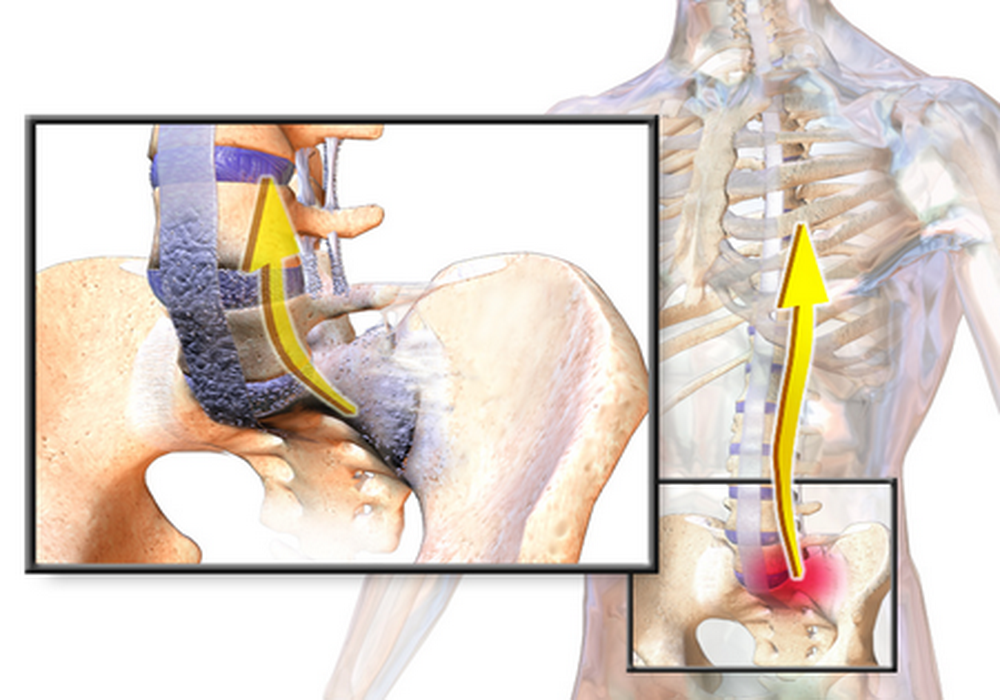
Early warning signs of ankylosing spondylitis
The early warning signs of ankylosing spondylitis include: • Sudden onset of stiffness or back pain, usually involving the lower part of the backbone, in young people between the age of 15 to 30 years. • The pain is usually worse in the morning and lasts for half an hour to 45 minutes before the patient’s spine loosens up and he starts feeling better. • Pain and stiffness in other parts of the body as well like the back of the heel, under the feet or outside the hip joint. • There may be accompanying swelling of the knee and the ankle joints. • Recurrent inflammation of one eye which may lead to blurry vision.
- Important notification about information and brand names used in this slideshow!
- Photo courtesy of BruceBlaus by Wikimedia Commons : en.wikipedia.org/wiki/File:Blausen_0037_AnkylosingSpondylitis.png
- www.arthritis.ca/page.aspx?pid=915

Symptoms of ankylosing spondylitis
The signs and symptoms of ankylosing spondylitis vary in nature and intensity from person to person. The symptoms may develop within three months in some individuals, and in others it may take years for them to evolve. Some of the common signs and symptoms associated with ankylosing spondylitis are: • Severe backache: the pain is particularly bad in the second half of the night and early morning. • Arthritis: Apart from involvement of spine, ankylosing spondylitis may also lead to arthritis of other joints of the body like the hip joint and the knee joint. • Enthesitis: This is the inflammation of the bone where it is attached to a tendon or a ligament. The condition is very painful. Common sites of enthesitis include the top of the shin bone, Achilles tendon, base of the foot and ends of the ribs. • Fatigue: Patients of ankylosing spondylitis commonly complain of fatigue and generalized weakness.

Causes of ankylosing spondylitis
People carrying HLA-B27 gene are more likely to develop ankylosing spondylitis. If a person who is less than 40 years old has a family history of this condition in either parents or siblings and he is carrying the HLA-B27 gene, then there are 20% chances of him developing the disease. However, the odds of developing ankylosing spondylitis go down considerably if the person is above 40 years of age. Tumor necrosis factor alpha (TNF- α and interleukin-1 (IL-1) have also found to be associated with ankylosing spondylitis. Some researchers have also opined that development of ankylosing spondylitis may be associated with infection with Klebsiella. However, the evidences are largely circumstantial up till now.
- Important notification about information and brand names used in this slideshow!
- Photo courtesy of Neeta Lind by Flickr : www.flickr.com/photos/neeta_lind/3571573765/
- www.webmd.boots.com/back-pain/guide/ankylosing-spondylitis
- http://en.wikipedia.org/wiki/Ankylosing_spondylitis
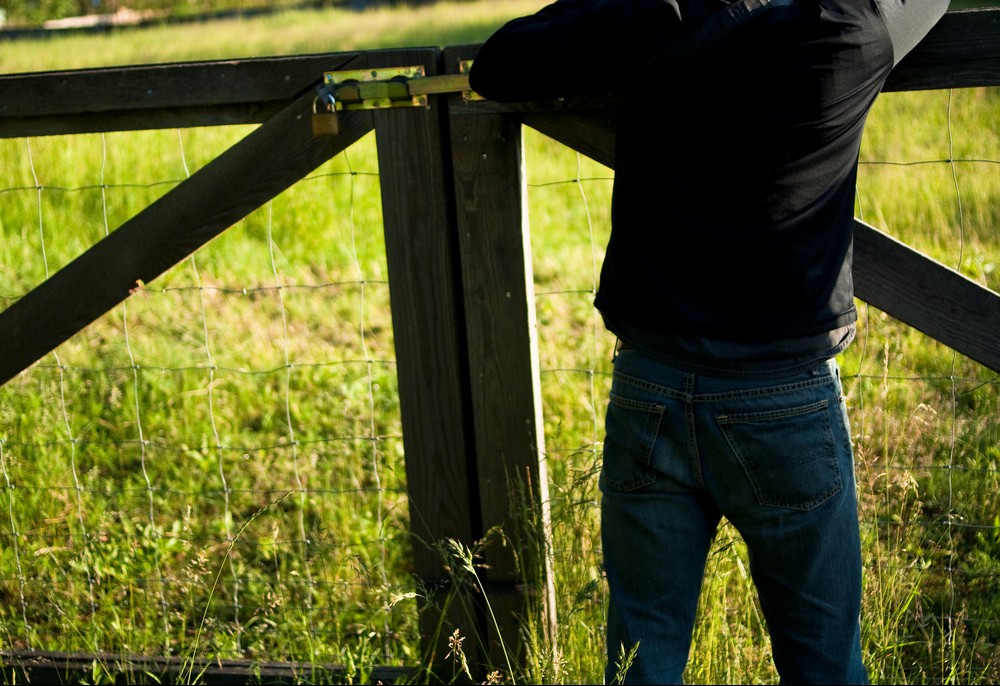
Who's at risk?
There are several factors which may increase your risk of developing ankylosing spondylitis. They include: • Age of onset: Ankylosing spondylitis usually begins in late adolescence or early adulthood. The earlier the onset of disease, the higher the risk of developing permanent disability. • Sex of the patient: Your chances of developing ankylosing spondylitis become three times higher in case you are a male. However, if you are a female and are suffering from ankylosing spondylitis, you are more likely to develop a permanent disability compared to men. • Genes of an individual: It has been seen that persons carrying HLA-B27 gene are at an increased risk of developing ankylosing spondylitis. However it is not necessary for all carriers of HLA-B27 gene to develop the condition.
- Important notification about information and brand names used in this slideshow!
- Photo courtesy of craig Cloutier by Flickr : www.flickr.com/photos/craigcloutier/4227929212/
- www.mayoclinic.com/health/ankylosing-spondylitis/DS00483/DSECTION=risk-factors
- http://www.ncbi.nlm.nih.gov/pubmed/11246669

Possible complications of ankylosing spondylitis
The complications arising from ankylosing spondylitis vary from patient to patient. Some of the commonly seen complications of the disease include: • Uveitis: It is the painful inflammation of a part of the eye. It is usually unilateral. The involved eye becomes red and shows increased sensitivity to light. It usually responds to treatment in the initial phase, but if left untreated, it may lead to loss of vision. • Osteoporosis: Ankylosing spondylitis can lead to osteoporosis of the back bone. • Spinal fractures: Patients suffering from ankylosing spondylitis have an increased risk of developing spinal fractures. The risk is directly proportional to the duration of ankylosing spondylitis. • Cardiovascular diseases: Patient suffering from ankylosing spondylitis are more likely to develop cardiovascular diseases like heart diseases, stroke and deep vein thrombosis. • Deformities of the spine: Reduced flexibility of the spine is seen in four of every ten patients suffering from ankylosing spondylitis. It may ultimately lead to kyphosis, wherein the upper part of the spine stoops forward permanently.
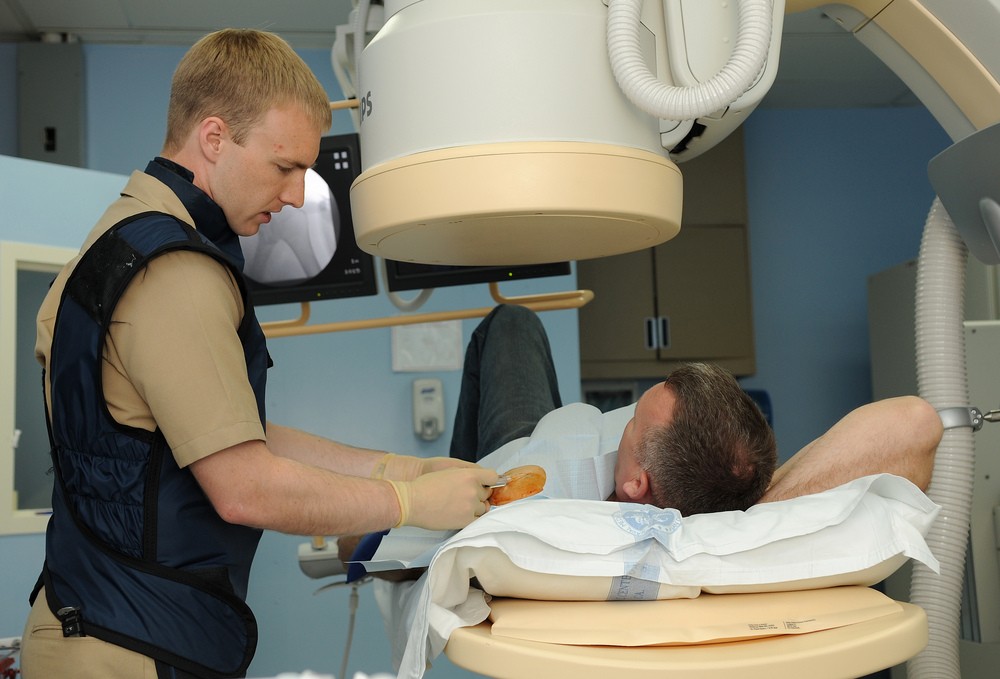
Diagnosis of ankylosing spondylitis
Diagnosis of ankylosing spondylitis is generally made on the basis of following tests: • Physical examination: The physician would examine the spine to look for the site of maximum tenderness. He may also test for spinal mobility in all directions and any restriction of chest movement. • X-ray spine: X-ray examination of the spine may show erosion typically seen in sacroillitis. However, these changes usually take around ten years to develop and X- ray may be of little help before that. MRI scan may be better but it is difficult to interpret the results. Also, the cost is often prohibitive. • Blood test: A blood test may show the presence of HLA-B27 gene but it is not diagnostic of ankylosing spondylitis. A raised ESR is a sign of inflammation but is positive in less than 70% of the patients.
- Important notification about information and brand names used in this slideshow!
- Photo courtesy of Phillip James by Flickr : www.flickr.com/photos/65526440@N08/7338914820/
- www.spondylitis.org/about/as_diag.aspx
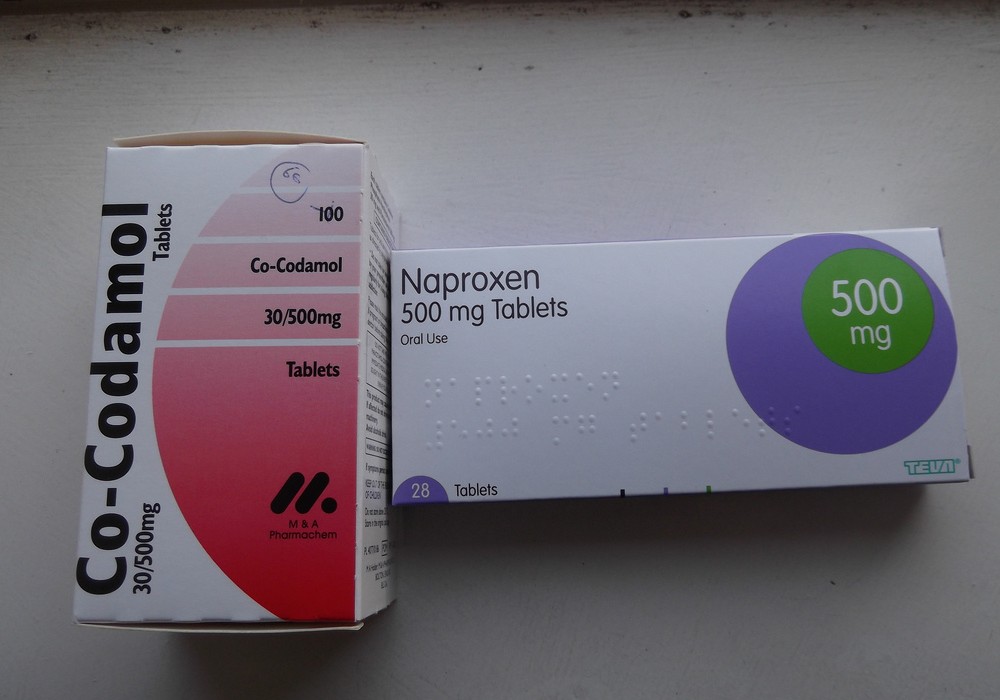
Medication for ankylosing spondylitis
Some of the commonly prescribed medicines to treat the symptoms of ankylosing spondylitis include: • Non steroidal anti-inflammatory drugs (NSAIDs): NSAIDs like ibuprofen, aspirin and naproxen are commonly prescribed to patients suffering from ankylosing spondylitis to get relief from the pain and stiffness associated with the disease. • Disease modifying anti-rheumatic drugs (DMARDs): DMARDs like methotrexate are prescribed to those patients who do not get adequate relief with NSAIDs. These drugs are helpful in reducing the pain, stiffness and inflammation. • Tumor Necrosis Factor blockers (TNF blockers): TNF blockers work by acting against TNF. The latter is responsible for the inflammatory changes associated with ankylosing spondylitis. Examples of TNF blockers include Adadimumab, Etanercept and Golimumab. • Antidepressants: Antidepressants like Cymbalta have been approved by the FDA for treating chronic back pain. • Steroid injections: In certain cases, steroid injections given into the joint space may provide relief from inflammation.
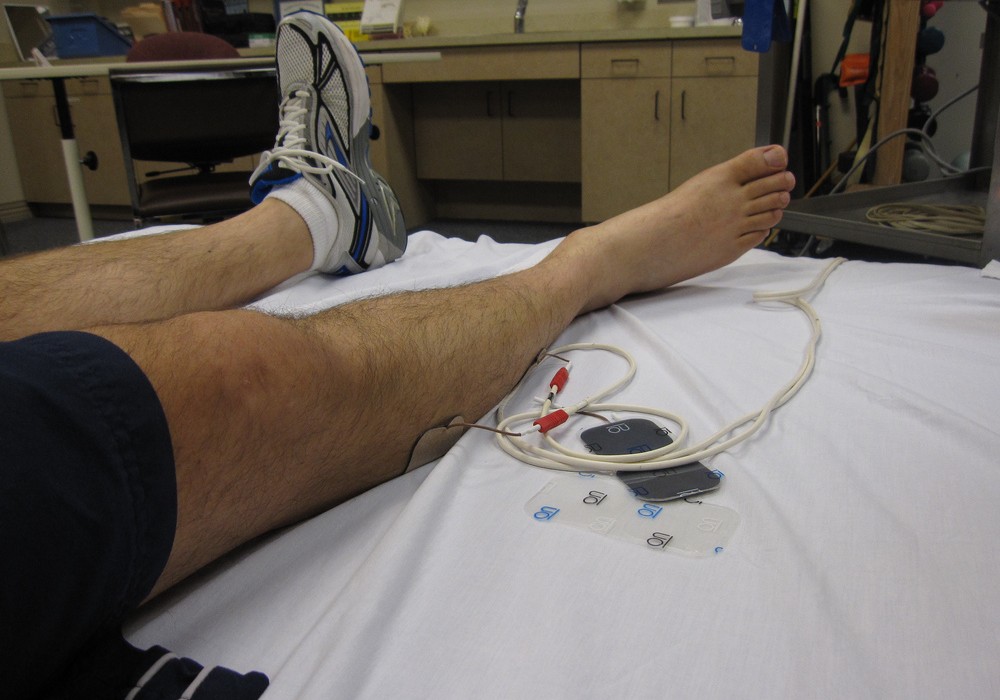
Physical therapy
Physical therapy is not only important for pain relief; it also helps in improving flexibility of the spine. It is important to consult a physiotherapist before embarking on any type of exercise regimen. He will guide you to do exercises customized according to your needs. Exercises that involve stretching and range of motion are important for maintaining a good posture and improving the flexibility of the joints. Deep breathing exercises help in increasing the lung capacity. The physiotherapist can show you the proper body position to be maintained while walking and sleeping and exercises for the back and abdominal muscles which will help in preventing kyphosis or forward stooping of the upper body seen in ankylosing spondylitis.




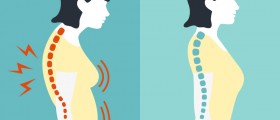



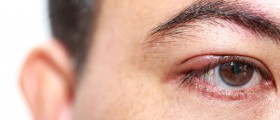


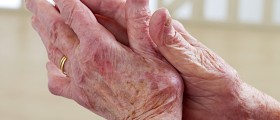







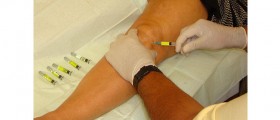

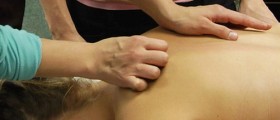
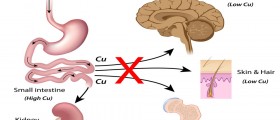


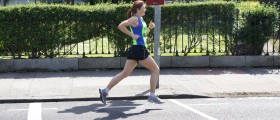

Your thoughts on this
Loading...